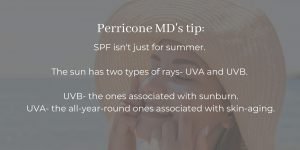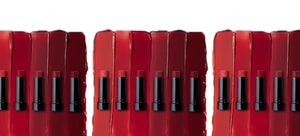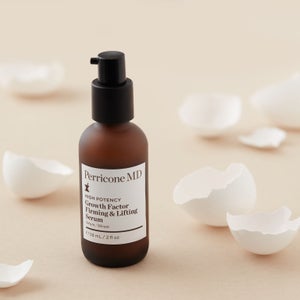They say you shouldn't take things at face value. This however, does not apply to our actual faces. When the skin barrier that coats our face is healthy, it is shown in our complexions. It comes hand in hand with skin that is smooth, supple and plump. On the other hand, a damaged skin barrier can show quite the opposite. Think dryness, rough patches, and sensitivity- but before we go any further, what actually is a skin barrier? This term has taken the skincare world by storm but often goes unexplained. Here's all you need to know about the mysterious shield that sits on our complexions and how to protect the skin barrier.

What is a skin barrier
So firstly, let's answer the question you may be wondering at this point: what is a skin barrier? The very outer layer of our skin, the skin barrier is made up of skin cells bound together by lipids. These skin cells contain keratin and natural moisturisers while the lipids hold cholesterol, fatty acids, and ceramides- all vital substances for our skin's health. Therefore, combined, these cells and lipids create a watertight seal that keeps the skin plump and intact.
How to tell if your skin barrier is damaged
A damaged skin barrier will often be easily distinguishable. In fact, when your skin feels anything other than fabulous you can presume it's the barrier crying out for attention and care. Watch out for signs of dry, scaly skin, itchiness, rough patches and sensitivity. These are the first signs to tell if your skin barrier is damaged.
A large factor that can damage the skin barrier is a harsh skincare routine. With the influx of ingredients and steps that make up our regimens today, it's no surprise that we may find ourselves often over-doing it. We have established that you can use Niacinamide with Retinol. In fact, Niacinamide helps stimulate the skin’s natural production of fatty acids and ceramides. Having said this, when it comes to powerful ingredients, it's best to allow them to work their magic overnight. Using ingredients that chemically exfoliate during the day can cause our skin to become over-exposed to pollutants and UV rays, leading to a damaged skin barrier.
What is the function of the skin barrier
We spoke about what the skin barrier is, but how does it work? The function of the skin barrier is not just for aesthetic purposes. While it locks in vital substances and moisture into the skin to help keep it plump and smooth, the skin barrier also functions to keep us alive by protecting us from any harmful toxins and pathogens.
However, this protection is a two-way street. To work at its best, it really is important that the skin barrier is kept in tip-top condition and is kept protected itself. How we protect the skin barrier has a huge impact on how it performs. When it is damaged, it can lose its ability to hold on to these substances inside the cells and lipids that keep skin cells intact, from keratin to fatty acids. It also loses its ability of locking the moisture into the skin and allows the skin itself to become vulnerable to external aggressors.
How to protect the skin barrier
There are plenty of ways how to protect the skin barrier as there are plenty of things that can damage it. Aside from genetics and age, there are environmental factors that play a large part and can be easily avoided.

As mentioned previously, a harsh skincare regimen can have an affect on the skin's barrier. Chemically exfoliating ingredients can leave the skin feeling delicate so as always, exposure to the sun without SPF is a big no-no. Don't forget, the weather doesn't have to be warm to damage the skin! The sun has two types of rays- UVA and UVB. UVB rays are the ones associated with our sun holidays while UVA rays are around even on a dull, cloudy day. These rays are actually the ones most associated with prematurely aging our skin.
To protect the skin's barrier against these environmental factors such as the sun's rays and pollution in the air, it's important to look for the right ingredients in skincare. For example, Perricone MD's Vitamin C Ester Brightening Moisturiser contains SPF 30 to protect against both UVA and UVB rays from the sun. It also helps to protect against environmental aggressors with an invisible shield made by its own fatty acid, Alpha Lipoic Acid (ALA).
How to redeem a damaged skin barrier
To visibly protect a damaged skin barrier, two things are essential: hydration and tenderness. Use a serum that contains pro-fatty acids such as omegas 3, 6 and 9 to strengthen the skin’s moisture barrier and improve its ability to retain water. Keep an eye out for ingredients like Copper Tripeptide. This is an amino acid trio that helps to protect the skin barrier against environmental aggressors. When cleansing, try a gentle, low-foaming cleanser with delicate ingredients to soothe and nourish while removing impurities.
Lastly, as always there’s one more step to take in order to guarantee a healthy skin barrier: nutrition. Potent, topical skincare paired with the right nutrition is a recipe for a plump, smooth complexion. The inside-out health benefits of fatty acids such as omega 3s can work to fight any inflammation you may be noticing on your skin. Why not try this Salmon Fillets with French Lentils Recipe for dinner tonight?

How you treat your skin barrier is directly correlated to how it will treat you. When treated like the precious, delicate layer it is, it will be able to work to the best of its ability for a plump, dewy complexion and far beyond.
Shop This Post:








